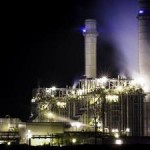Beijing – Natural gas consumption accounts for only four percent of China’s total energy needs, well below the world’s average of 24 percent, and even below Asian countries’ average of 11 percent, Wu Yin, Deputy Head of the National Energy Administration, said at an energy forum on Saturday.
The country has booming demand for natural gas, but its supplies always fall short of demand, forcing the government to raise onshore natural gas prices by 25 percent in early June to adjust for the market demand.
China aimed to double the weighting of natural gas in its total energy consumption basket to eight percent over the next five years, which would also be a test of the country’s gas production capacity, Wu said.
“China has to accelerate the exploitation of unconventional gas to meet the target,” said Hu Wenrui, academician from the Chinese Academy of Sciences, who is also the head of the China Petroleum Enterprise Association.
China has huge unconventional gas resources, five times greater than its conventional gas deposits. Increasing unconventional gas production could also ease restrained oil supplies and rising costs of oil production and cut carbon emissions, he said.
“China’s coal-based energy consumption mode has to be altered as it vowed to reduce the intensity of carbon dioxide emissions per unit of gross domestic product (GDP) by 40 to 45 percent by the year 2020 from 2005 levels. As a cleaner alternative to coal, unconventional gas production should be ramped up,” Hu said.
Actually, the country has strengthened cooperation with countries boasting advanced technologies to accelerate the exploitation of its unconventional gas reserves. In the just-concluded Sino-U.S. Strategic and Economic Dialogue, the two sides agreed to further promote cooperation in assessment, exploration and production of shale gas. As early as in November 2009, the two countries signed the U.S.-China Shale Gas Resource Initiative, a move enabling China to leverage U.S. experience in developing unconventional gas resources.
Many companies also became actively involved in this promising industry. China Petrochemical Corporation (Sinopec Group) said in May that it plans to increase its annual unconventional gas output to 2.5 billion cubic meters by 2015. Its spokesman, Huang Wensheng, said development of unconventional oil and gas would become an important growth engine for the company’s business in the next five to ten years.
The oil giant’s 2009 corporate social responsibility report said it has set plans to develop coal-bed methane mainly in northern China, and shale gas in the southern part of the country.
China’s largest oil company, China National Petroleum Corp (CNPC), is also active in developing unconventional oil and gas by strengthening cooperation with foreign companies, such as Royal Dutch Shell, Statoil ASA and ConocoPhillips.
In March, CNPC signed an agreement with Shell to jointly develop and produce tight gas in China’s Sichuan Basin, only several months after the two agreed to also develop a shale gas block in Sichuan.
“Energy issues have become one of the major bottlenecks for China’s economic development. The exploitation of unconventional gas will be a key solution,” Hu noted.













